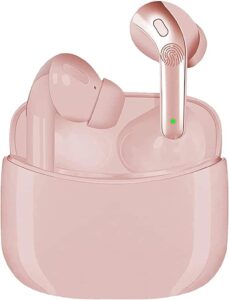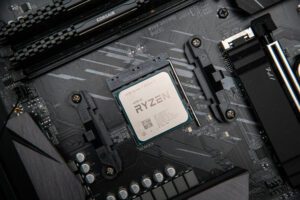Your computer monitor may not be turning on due to a faulty cable connection or a power issue. Having a non-functional computer monitor can be frustrating and can hamper your productivity.
If you’re experiencing issues with your monitor, it’s crucial to identify the cause of the problem to resolve it quickly. Often, a simple connection issue can be the reason why the monitor won’t turn on. It could be an unplugged vga or hdmi cable or a cable that’s not entirely tight.
In other cases, the problem may be related to power. Check if the monitor is plugged in and that the power outlet is working. Sometimes, a monitor that won’t turn on could be the result of outdated drivers or hardware problems, such as a damaged monitor screen. In this article, we’ll take a closer look at the reasons why your computer monitor won’t turn on and how to troubleshoot the problem.


Credit: m.youtube.com
Check For Power Supply Issues
If you’re struggling with a monitor that won’t turn on, one of the first things to check for is power supply issues. In this section, we will explain how to check power supply connections, troubleshoot a power outage, diagnose and replace a failed power supply unit, and common mistakes and misconceptions.
Steps To Check Power Supply Connections
If your monitor’s power supply connections are loose or disconnected, it can result in the monitor not turning on. Follow these steps to check your connections:
- Turn off the monitor and disconnect it from the power outlet. Also, disconnect it from your computer.
- Examine the power supply cable for any visible damage. If there is any visible damage, replace it with a new one.
- Check both sides of the cable connection to ensure that it’s secure. Disconnect and reconnect it again if necessary.
- If you are still having issues, try plugging the power cable into a different outlet and then turn on the monitor.
How To Troubleshoot A Power Outage
Power outages can happen, and they can be a reason why your computer monitor won’t turn on. Here’s how to troubleshoot a power outage:
- Check if the power outlet is working correctly by testing it with a device that you know works, such as a lamp or phone charger.
- If the power outlet is not working, try plugging the monitor into a different outlet.
- If the power outlet is working correctly, but the monitor still won’t turn on, try resetting the monitor by pressing the reset button if it has one.
How To Diagnose And Replace A Failed Power Supply Unit
If your computer is not turning on even after trying the above steps, it’s time to diagnose and replace the power supply unit. Here are the steps to follow:
- Disconnect all the cables from the computer, including the power supply cable.
- Open the computer case and locate the power supply unit.
- Check if the power supply fan is functioning correctly. If it’s not functioning or if there is any physical damage, it’s time to replace it.
- Before you buy a new power supply unit, check the wattage of the unit and compare it with your computer’s requirements.
- Remove the old power supply unit and replace it with a new one.
Common Mistakes And Misconceptions
People often encounter issues while starting up their computers that can be easily resolved with little or no technical expertise. Here are some common mistakes and misconceptions that you should avoid:
- Don’t forget to check the power outlet and cable connection before proceeding to more complex troubleshooting steps.
- Make sure that the power outlet you’re using is providing the correct voltage. Sometimes, an outdated outlet can cause power fluctuations, resulting in the computer not turning on.
- Some people often forget to switch on the power supply unit switch located at the back of the cpu. Make sure that this switch is on.
- Always make sure that the power supply unit you buy is compatible with your computer’s requirements.
By following these steps, you can troubleshoot and diagnose power supply issues in your computer and prevent similar problems in the future.
Testing The Monitor
If your computer monitor won’t turn on, the first thing you need to check is whether the monitor is turned on or off. Follow these steps for the same:
- Check the power button on the monitor and ensure that it is switched on.
- Ensure that the power cord of the monitor is correctly plugged into the power socket and the back of the monitor.
- Check whether the monitor is receiving power by looking at the led light on the front panel. If the led is off, the monitor is not receiving power.
Ways To Identify A Dead Monitor
If none of the above steps work, then it’s possible that your monitor may be dead. These are some of the signs you need to look for:
- No led light on the front panel
- No display on the screen
- Strange sound coming from the monitor
How To Test The Connections Between The Computer And The Monitor
If you’re using a desktop computer, ensure that the connection between the computer and monitor is correctly plugged in by following these steps:
- Check that your computer’s graphics card is properly connected to the motherboard.
- Verify that the vga/hdmi cable is firmly connected to both the monitor and graphics card.
If you’re using a laptop, then you need to follow specific steps to troubleshoot the issue with your monitor. For instance, you can connect an external monitor to your laptop to verify whether the problem is with the laptop’s screen or something else.
Remember that you can change your display settings by pressing the “windows” key and “p” simultaneously. Then, choose “extend” to view your desktop on both your laptop screen and external monitor.
In case you do not see the desktop on your external monitor, check that the cables are correctly plugged in on both sides.
In short, testing the monitor and connections is an essential troubleshooting step to resolving problems with your computer monitor.
System And Hardware Issues
Why Won’T My Computer Monitor Turn On? Troubleshoot The Issue Now!
If your computer monitor won’t turn on, it could be due to hardware, software, or system problems.
How To Troubleshoot System Startup Issues
Here are some tips to troubleshoot your system if it’s not starting up properly:
- Check your power source: Ensure that your power source is properly connected and working.
- Check your bios settings: Your bios settings might be causing the issue of startup failure. You can reset your bios settings or change them to their default settings.
- Test your hardware: To ensure your hardware is functioning correctly, use a diagnostic tool to identify start-up issues.
How To Diagnose Hardware Problems And Solutions
Hardware problems can lead to a monitor not turning on. Here are some potential solutions:
- Check your cables: Loose or damaged cables can cause your monitor not to turn on. Ensure all cables are connected and undamaged.
- Re-seat your ram: Sometimes, due to dust or corrosion buildup, ram modules can become loose. Re-seating the modules may solve the issue.
- Check your power supply: Your power supply may have failed, which can cause your monitor to not turn on. Test your power supply using a multimeter to determine if that’s the issue.
How To Troubleshoot Graphic Card Issues
A graphic card issue could be the reason why your computer monitor is not turning on. Here are some things you can do to determine if this is the issue:
- Check your monitor inputs: Ensure your monitor is connected to the graphic card output and not the onboard output.
- Restart your computer: Sometimes, a software glitch can cause a graphic card problem. Rebooting your computer may resolve the issue.
- Update your drivers: Ensure that your drivers are updated to their latest version, which can resolve graphic card issues.
Ways To Fix Driver Problems
Driver problems can cause a monitor not to turn on. Here are potential solutions:
- Uninstall and reinstall: If you suspect that a driver is causing the issue, you can uninstall and then reinstall it to fix it.
- Use windows update: Windows update provides driver updates as well. Ensure you have installed all the latest updates to eliminate driver-related problems.
- Roll back your driver: If you recently updated a driver, and the monitor stopped working, try rolling back the driver to the previous version.
By following these tips, you can diagnose and solve the issues that cause a computer monitor not to turn on.
Other Common Issues
If your computer monitor won’t turn on, there could be several reasons behind it. Below are some common issues that might help you troubleshoot the problem:
Dealing With Display Resolution And Refresh Rate
- If your computer’s display resolution is set higher than your monitor’s native resolution, your monitor might not turn on.
- The refresh rate of your monitor should match that of your computer for a proper display.
Troubleshooting Specific Errors And Issues
- If your monitor has power, but the screen is black, there could be a problem with the video cable.
- If your monitor shows a message saying “no signal,” it could mean that the monitor cable is not connected to the computer properly.
- If your monitor shows a distorted or flickering image, it might need a driver update or a new cable.
Ways To Work With A Damaged Monitor
- If the monitor is physically damaged, there may not be any easy ways to fix it. You can try replacing the monitor or seeking professional help.
- If there is a dead pixel on the monitor, you can try to massage it gently with a soft cloth to see if it can be fixed.
Determining If There Is A Virus Or Malware Affecting Your Computer
- Some viruses and malware can affect the video drivers on your computer, which may result in no display or distorted images. Be sure to run a virus scan on your computer to rule out this possibility.
By following the above troubleshooting steps and determining the issue, you can get your computer monitor to turn on and display your content as it should.
Frequently Asked Questions For Why Won’T My Computer Monitor Turn On
Why Won’T My Computer Monitor Turn On?
There could be various reasons behind this, such as loose cables or a power outage.
How Do I Fix A Monitor That Won’T Turn On?
First, ensure the power cable is securely connected. If that’s not the issue, test the monitor with another device.
Can A Dead Graphics Card Prevent A Monitor From Turning On?
Yes, a graphics card failure can prevent a monitor from turning on. Test with another device before jumping to conclusions.
Conclusion
After going through all potential causes as to why your computer monitor won’t turn on, it is evident that there could be various culprits to this problem. It could be a simple solution such as a loose cable or a more serious issue such as a faulty monitor.
As such, it’s imperative to diagnose the problem correctly and proceed with the necessary steps to solve the issue. Avoiding amateurish mistakes such as ignoring signs of power surges can help maintain the longevity of your monitor. Keep in mind the essential troubleshooting tips we have shared in this article and seek professional assistance if necessary.
Computers are integral parts of our daily lives, and it’s crucial to ensure that they are working as efficiently and effectively as possible. Therefore, always keep an eye out for any issues to maintain a smooth workflow.



